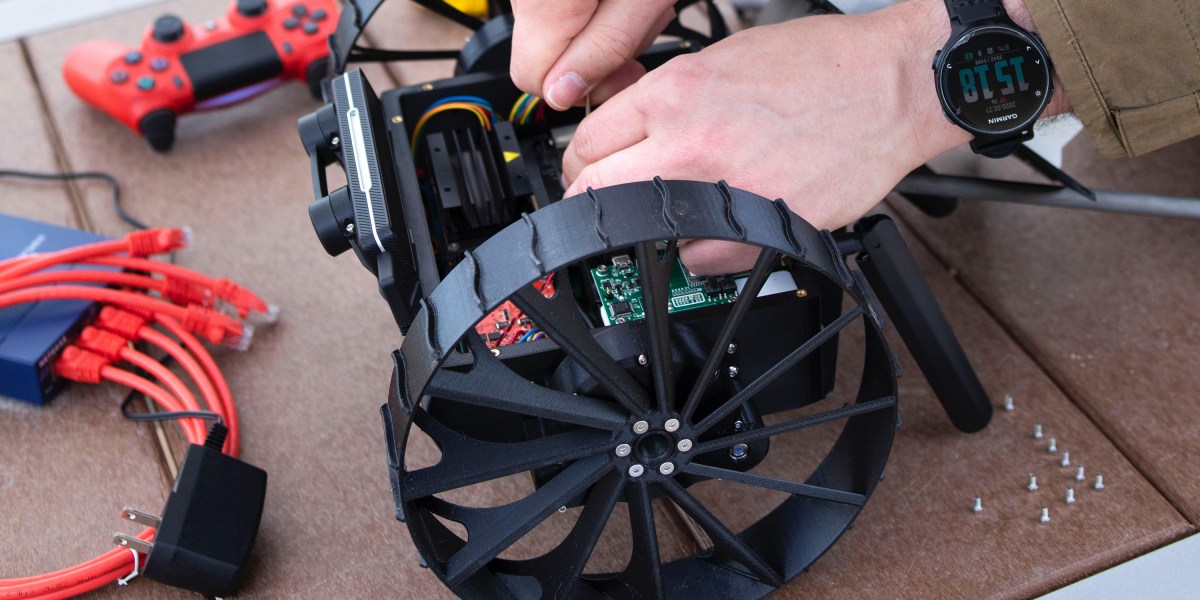
Onboard, each rover will carry a small computer, a wireless radio, and a stereo camera to capture 3D imagery. While none of them alone will be able to collect as much data as a larger one would, deploying several at once could reduce the risk of a catastrophic mission failure.
CADRE was developed inside NASA’s Jet Propulsion Laboratory in California and tested by researchers at the Simulated Lunar Operations (SLOPE) Laboratory at the NASA Glenn Research Center in Cleveland. SLOPE is the same lab that tested VIPER (Volatiles Investigating Polar Exploration Rover), a mobile robot that will launch in November 2023 and scout for frozen water on the moon.
One goal of the project is to prevent a recurrence of what happened to NASA’s Mars rover, Spirit, back in 2009—the stuff of nightmares for space exploration enthusiasts.
One of two twin rovers sent to opposite sides of Mars in 2004, Spirit delivered some of the most detailed views of the Red Planet humanity had ever seen. But five years into its mission, Spirit’s wheels got stuck in soft Martian sand. NASA engineers worked for eight months to get it to move, but after multiple failed attempts, Spirit was eventually relegated to service as a stationary science platform.
To make sure the new rovers don’t get stuck, SLOPE simulates the unique terrains they must navigate, from the powdery soil of the moon to the rocky Martian surface. Researchers use motion capture technology involving a pair of stereo cameras to create thousands of 3D pictures used to measure each rover’s speed and the movement of its tires, helping them predict how soil could react.
“This system allows us to really characterize the traction performance,” says Schepelmann. “We’re able to measure basically how each part of the robot moves.”
Wolfgang Fink, an associate professor of electrical and computer engineering at the University of Arizona who studies autonomous exploration systems, says that though rovers like Curiosity and Perseverance had limited autonomy, the shift to full autonomy through projects like CADRE will allow humanity to explore areas we might never otherwise reach.
On average, communication takes only seconds to travel between Earth and the moon, but that time stretches into minutes if the message has to travel from Mars. As far away as Titan, Saturn’s largest moon, communication between mission control and any lander or rover would take hours, which means any unforeseen hitch could put the entire mission in jeopardy. The farther from home we wish to explore, the more autonomy will matter.